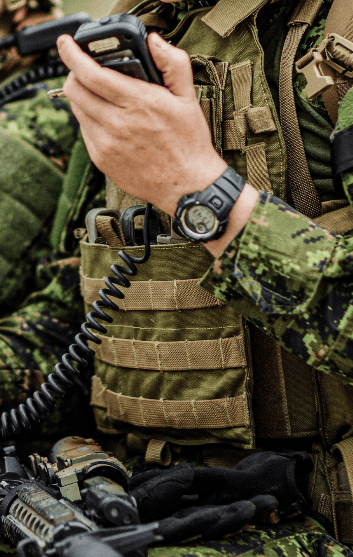Emergency Communication Systems for Response and Interoperability
Mission-Critical Communication: Radio Interoperability, Vehicle Intercoms, and Wireless Systems for Hazmat Scenarios
OUR MISSION
At C-AT we are dedicated to empowering frontline heroes in every critical scenario by building durable, user friendly communication products that seamlessly bridge technologies in any environment.
WHO WE SERVE
DISASTER RELIEF
C-AT equips disaster relief organizations with robust communication solutions, ensuring seamless coordination and response during critical emergencies, from natural disasters to humanitarian crises.
PUBLIC SAFETY
C-AT supports fire departments with advanced communication systems designed to enhance situational awareness and operational efficiency, crucial for firefighting operations in diverse and challenging environments.
MILITARY
C-AT provides military forces with cutting-edge communication technology tailored for tactical missions, including radio interoperability and vehicle intercom systems that withstand the rigorous demands of combat and training scenarios.
AMERICAN MADE SINCE 1982
C-AT® designs and manufactures advanced communication systems, including radio interoperability gateways, vehicle intercom systems, and CBRNE communication solutions, built to meet the rigorous demands of public safety and military agencies, as well as first responders.
Since 1982, C-AT voice communications systems have been proudly made in the U.S.A. Our focus is on providing straightforward, easy-to-use solutions that enhance operational efficiency, improve security, and ensure reliable communication between teams in critical situations. We prioritize practicality and durability to support effective decision-making in the field.

FEATURED PRODUCTS
Explore our extensive range of communication systems, designed to adapt to your specific operational demands.
In-Building/Below Grade Repeater System
Our in-building below-grade tactical repeater extends radio coverage for entry teams operating within buildings, tunnels, ships, and other confined spaces. This ensures seamless communication with the Tactical Operations Center (TOC), Emergency Operations Center (EOC), or Dispatch.
iSatLink ICRI - Radio Interoperability Gateway
The Iridium SatLink ICRI can connect to your existing systems and is portable, plug and play and can interconnect radios to Iridium Satellite with ease. Be prepared for a dark sky day and include this in your PACE plan.
LMR-TO-MSAT/G2 Satellite Interface
Effortlessly connect your LMR portable radio to the MSAT/G2 satellite terminal, creating a tactical radio-to-satellite (TACSAT) link. This setup enables seamless transition from Line-of-Sight (LOS) to Beyond- Line-of-Sight (BLOS) communications, ensuring reliable connectivity in all scenarios.
Trusted
C-AT has been a dependable partner in public safety and military communications since 1982, ensuring seamless operations in critical moments.
Safe
Our equipment is designed to enhance safety and security, providing reliable communication solutions for first responders and military personnel.
Reliable
Built to endure the toughest conditions, C-AT’s communication systems consistently deliver superior performance when it matters most.
FAQ
How do I know which ICRI is best for my team?
At C-AT we have encountered countless scenarios. Schedule a strategy session with one of our communications experts and we can strategize response scenarios with you to enable the best solution for your organization.
Who is the ICRI product designed for?
Agencies training and responding to scenarios that need to ensure they are able to connect to all communications systems on and off scene. The ICRI enables interoperability between communication equipment enhancing agency response.
Can the Incident Commanders Radio Interface be used between different entities/agencies?
Yes! The ICRI is designed to allow interoperability between different agencies onsite.
How can I connect radios in different talk groups?
The ICRI simplifies the process—just turn a knob directly on the unit to switch between two or four talk group options. For added versatility, the digital whiteboard empowers you to configure talk groups remotely, providing the flexibility and control needed to meet mission demands.
Do the systems have different power supply sources?
Absolutely. The ICRI is built for efficiency and reliability, with low power consumption that ensures continuous operation for up to 24 hours under consistent use. It’s equipped to handle any situation with multiple power supply options, including an A/C power adapter (120/240 VAC), 12-24 VDC vehicle power adapters, an uninterruptible power supply (UPS), and external batteries. To keep you ready for the mission ahead, a low battery indicator activates when there is one hour of power remaining—because preparedness is the foundation of success.
HAVE A UNIQUE MISSION?
Our team can custom craft communications solutions for any scenario. Fill out the form below and our team will will be in touch.
BLOG NEWS
In emergency operations, direct radio-to-radio interoperability risks can silently compromise your mission. What appears to be a simple cabl...
Fentanyl continues to pose the deadliest drug threat in the United States, with over 150 overdose deaths occurring daily. Combatting this cr...
In any life-critical operation—whether it’s a battlefield deployment or a multi-agency disaster response—time, clarity, and control determin...